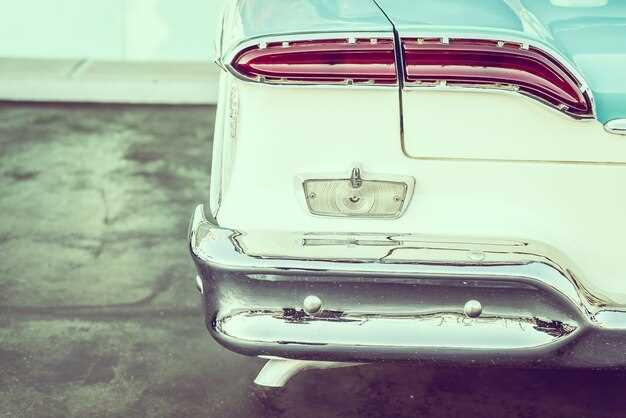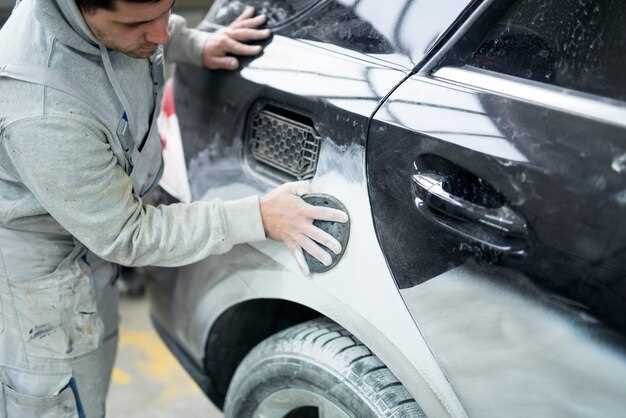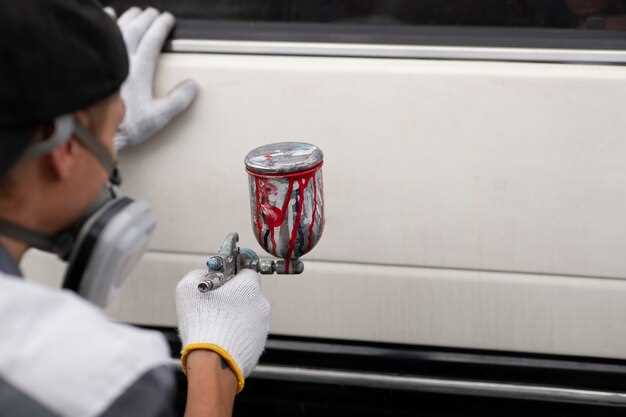
Classic cars are not merely vehicles; they are treasured pieces of automotive history that reflect craftsmanship and style. However, with time, exposure to the elements can lead to paint fading, diminishing the beauty of these timeless machines. Protecting the paintwork is essential for any classic car enthusiast looking to maintain their vehicle’s value and aesthetics.
In this article, we will explore essential tips and strategies for preserving the vibrant appearance of classic car paint. From understanding environmental factors that contribute to fading to implementing effective protective measures, we will cover everything you need to know to ensure your classic car looks as good as new for years to come.
Whether you take your classic car out for a leisurely drive or keep it securely parked in a garage, the right maintenance routines and protective strategies can make all the difference. Join us as we delve into the best practices for shielding your prized possession from the damaging effects of sun exposure, pollution, and improper cleaning techniques.
Choosing the Right Wax for Long-Lasting Shine
Selecting the appropriate wax is crucial for maintaining the brilliance of your classic car’s paint. Different types of waxes offer varied benefits, so understanding their characteristics will help in making an informed decision.
Natural waxes, such as carnauba, are known for their deep, warm shine and excellent water-repellent properties. This type of wax is ideal for classic cars, as it enhances the paint’s depth while providing a lightweight layer of protection against UV rays and environmental contaminants. However, carnauba wax may require more frequent application to maintain its effect.
Synthetic waxes, on the other hand, are crafted from polymer compounds. They typically provide a longer-lasting finish compared to natural waxes. Synthetic options often offer better resistance to harsh weather conditions and can shield the paint from oxidation. When choosing a synthetic wax, look for formulations that boast UV protection to guard against fading.
Another consideration is the ease of application. Some waxes come in paste form, while others are available as liquid products. Paste waxes usually take more effort to apply and remove but can yield a more durable shine. Conversely, liquid waxes are generally easier to use and may be more suitable for those new to car detailing.
Regardless of the type, ensure that the wax you choose is free of abrasives and contains no harmful chemicals that could damage the paint. Always read the product labels and select a wax specifically designed for automotive use to guarantee optimal protection.
For best results, apply wax in a shaded area to prevent the product from drying too quickly. Work in small sections, using a microfiber applicator pad for even distribution. Allow the wax to cure as per manufacturer’s recommendations, and buff the surface with a clean microfiber cloth to reveal a brilliant shine.
Ultimately, the right wax will not only enhance the aesthetic appeal of your classic car but also protect against fading, ensuring its beauty for years to come.
Optimal Storage Solutions to Minimize Sun Exposure

Proper storage is essential to protect classic car paint from UV damage and fading. Choosing an appropriate location can significantly extend the life and appearance of your vehicle’s exterior.
Indoor Storage: The best way to protect against sun exposure is to store your classic car indoors. A garage or dedicated storage facility shields the car from direct sunlight and fluctuating temperatures. Ensure the indoor environment is dry and well-ventilated to prevent moisture buildup, which can lead to rust and paint deterioration.
Car Covers: If indoor storage is not an option, invest in a high-quality, breathable car cover specifically designed for UV protection. Choose a cover made from materials that prevent moisture accumulation yet provide a barrier against harmful rays. Always ensure the cover fits snugly to avoid wind-induced scratches.
Shade Structures: If you need to park outside, consider installing a shade structure, such as a carport or awning. These can significantly reduce direct sunlight exposure while providing a protective barrier against rain and other environmental factors. Ensure that the structure is tall enough to accommodate your vehicle without causing scratches or dents.
Window Tinting: If storing your classic car indoors with windows or in a location with a lot of glass, consider window tinting as an additional protective measure. Quality window films can block UV rays while keeping the interior cooler, thus reducing the risk of paint fading due to heat build-up inside the car.
Regular Maintenance: Even with optimal storage solutions, regular maintenance is crucial. Waxing the car at least twice a year can provide an additional layer of protection against UV rays and help maintain the paint’s vibrancy.
By implementing these storage strategies, you can effectively minimize sun exposure and preserve the aesthetic appeal of your classic car for years to come.
Regular Maintenance Routines to Preserve Paint Condition

To maintain the pristine condition of classic car paint, establishing a regular maintenance routine is essential. This involves a systematic approach to cleaning, waxing, and protective measures that can significantly prolong the life of the paintwork.
Firstly, frequent washing is crucial. Use a pH-balanced car shampoo to remove dirt and debris without stripping the protective layers. It is advisable to wash the car every two weeks or more often if exposed to environmental pollutants. Utilize a microfiber wash mitt to prevent scratches and rinse thoroughly with clean water to ensure no soap residue remains.
After washing, drying the vehicle with a microfiber towel is important to prevent water spots. Ensure you dry the car completely, focusing on areas where water can accumulate, such as door crevices and undercarriage parts. This prevents the buildup of mineral deposits that can damage the paint over time.
Waxing should be performed at least every three months. Choose a quality car wax or sealant specifically formulated for classic vehicles. Waxing not only enhances shine but also adds a protective barrier against UV rays, pollutants, and moisture. Apply the wax evenly and buff it off with a soft cloth to achieve a brilliant finish.
In addition to waxing, consider using a paint sealant for added protection. Sealants provide a longer-lasting shield compared to traditional wax and can withstand harsh environmental conditions. This is particularly beneficial for cars regularly driven in varying weather.
Regular inspection of the paint for chips or scratches is vital. If any damage is detected, promptly address it with touch-up paint or clear coat to prevent rust formation and further deterioration. Keeping a small repair kit in your garage can simplify this process.
Finally, storing your classic car in a controlled environment is key. Whenever possible, keep it in a temperature-regulated garage away from direct sunlight. If outdoor storage is unavoidable, use a high-quality car cover designed for breathable protection against UV rays and harsh weather.
